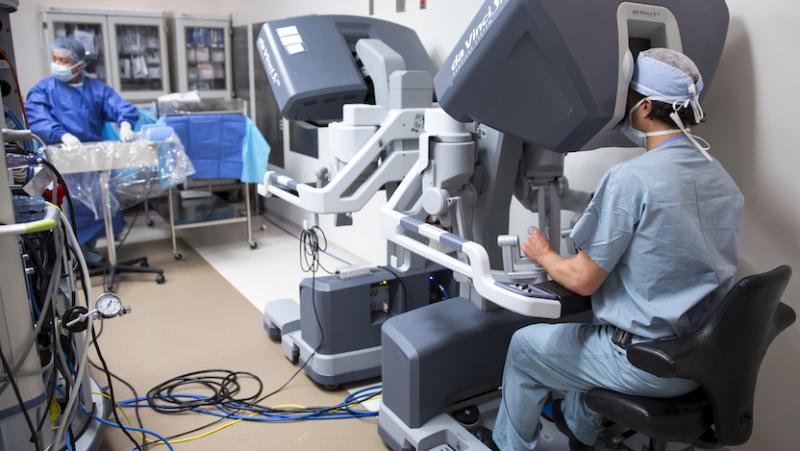Global Surgical Robots Market is Estimated to Witness High Growth Owing to Increase in Minimally Invasive Surgeries
The global Surgical Robots Market is estimated to be valued at USD 5,721.6 million in 2022 and is expected to exhibit a CAGR of 13.4% over the forecast period 2022-2030, as highlighted in a new report published by Coherent Market Insights.
A) Market Overview:
The Surgical Robots Market refers to the use of robotic technology in performing surgical procedures with enhanced precision, control, and flexibility. These robots assist surgeons in performing minimally invasive surgeries, resulting in reduced pain, shorter recovery time, and improved patient outcomes. Surgical robots find applications in various surgical specialties such as urology, gynecology, orthopedics, neurology, and cardiovascular surgeries, among others.
B) Market Dynamics:
The market is driven by two key factors:
1) Increase in Minimally Invasive Surgeries: There has been a rapid rise in the adoption of minimally invasive procedures globally. Surgical robots enable surgeons to perform complex surgeries through small incisions, reducing blood loss, scarring, and post-operative complications. This trend is driving the demand for surgical robots.
2) Rising Adoption of Robotic Surgery: The advancements in robotic technology have led to increased adoption of robotic-assisted surgeries across the globe. Surgeons are increasingly using surgical robots for their enhanced capabilities, such as 3D visualization, precision, and dexterity. The availability of advanced robotic systems with improved features is further propelling market growth.
C) Market Key Trends:
One key trend observed in the Surgical Robots Market is the integration of artificial intelligence (AI) and machine learning (ML) algorithms into surgical robots. AI and ML algorithms enable real-time data analysis, decision-making support, and predictive analytics during surgeries. This integration enhances the capabilities of surgical robots and improves surgical outcomes.
D) SWOT Analysis:
Strength:
1) Enhanced Precision: Surgical robots offer superior precision compared to traditional surgical techniques, reducing the risks associated with human error.
2) Improved Patient Outcomes: Robotic-assisted surgeries result in shorter hospital stays, reduced post-operative complications, and faster recovery, leading to improved patient outcomes.
Weakness:
1) High Initial Investment: The cost of acquiring and maintaining surgical robots is high, which can limit their adoption in certain healthcare settings.
2) Lack of Skilled Surgeons: The successful implementation of robotic-assisted surgeries requires skilled surgeons who are specifically trained in using these systems.
Opportunity:
1) Increasing Demand in Emerging Markets: The demand for surgical robots is expected to grow significantly in emerging markets due to rising healthcare infrastructure, increasing healthcare expenditure, and a growing patient pool.
2) Technological Advancements: Continued advancements in robotic technology, such as miniaturization, haptic feedback, and expanded applications, present opportunities for market growth.
Threats:
1) Regulatory Challenges: Stringent regulatory requirements for approvals and safety standards may impede market growth.
2) Limited Reimbursement Policies: The lack of reimbursement policies for robotic-assisted surgeries in some regions may restrict their adoption.
E) Key Takeaways:
- The global Surgical Robots Market is expected to witness high growth, exhibiting a CAGR of 13.4% over the forecast period, due to increasing minimally invasive surgeries and the rising adoption of robotic surgery.
- North America is expected to dominate the market due to the presence of advanced healthcare infrastructure, high healthcare expenditure, and early adoption of technological advancements.
- Key players operating in the global Surgical Robots Market include Intuitive Surgical, Think Surgical, Asensus Surgical US, Inc., Zimmer Biomet, Stryker, Smith & Nephew, Novus Health Products, and Medtronic.
In conclusion, the global Surgical Robots Market is poised for significant growth, driven by the increasing demand for minimally invasive surgeries and the adoption of robotic-assisted procedures. The integration of AI and ML algorithms into surgical robots and technological advancements present further opportunities for market expansion. However, challenges related to high initial investment costs, lack of skilled surgeons, and regulatory barriers need to be addressed to fully realize the potential of this market.
